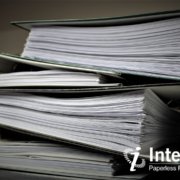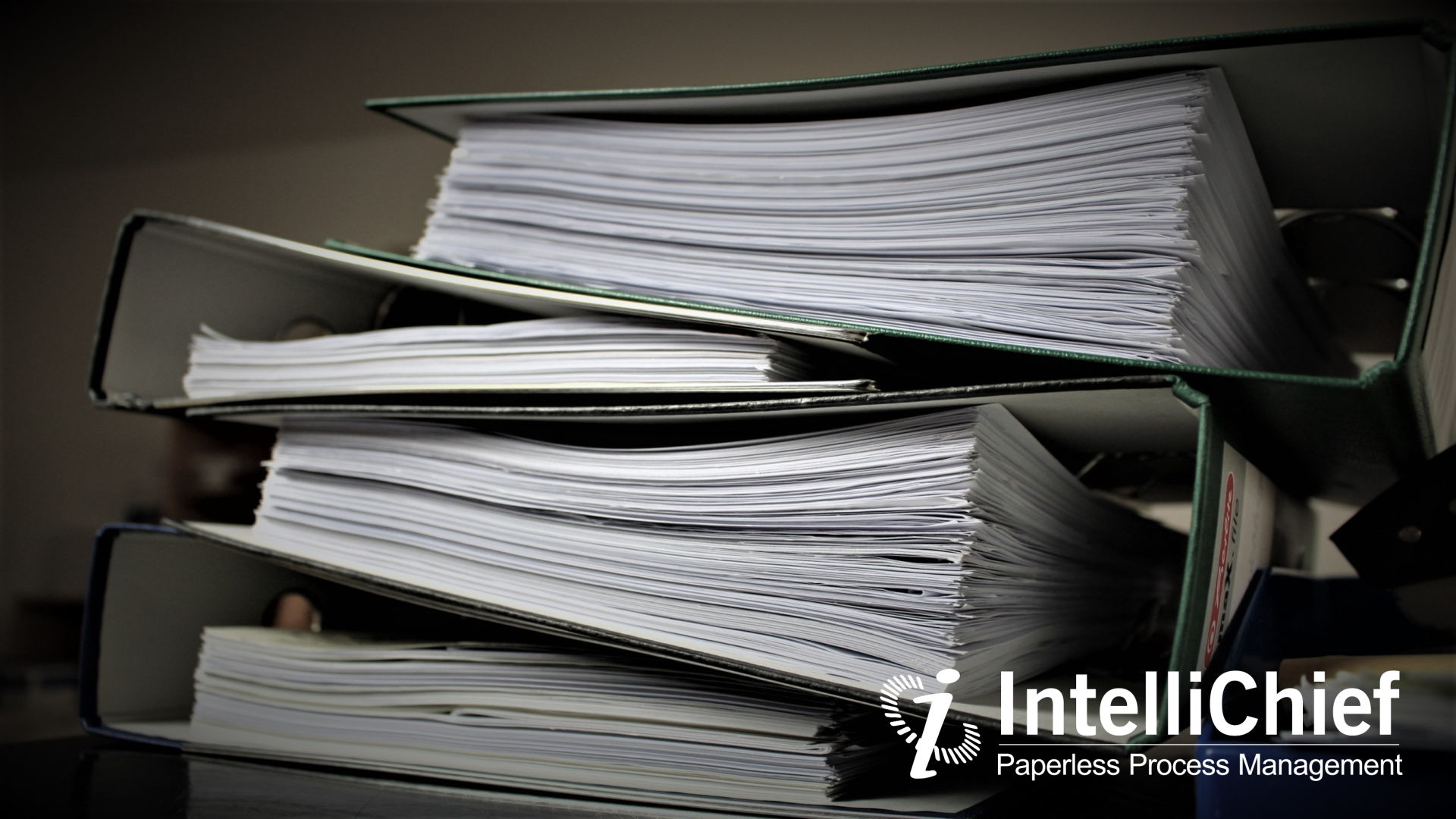OSHA Record Retention Requirements

The Occupational Safety and Health Administration (OSHA) is a part of the United States Department of Labor formed by the OSH Act. They govern the health and safety of certain public sector employers and workers as well as the majority of private sector businesses. OSHA is oftentimes perceived as a pest in high-risk industries like construction and manufacturing, where an OSHA inspector can arrive with little notice to assure compliance with OSHA rules, regulations, and record retention requirements.
OSHA is unavoidable. Its jurisdiction covers more than 7 million worksites across the United States, the District of Columbia, Puerto Rico, the Virgin Islands, and beyond. While OSHA inspections are generally the result of imminent danger situations, severe injuries and illnesses, worker complaints, referrals, targeted inspections, or follow-up inspections, it doesn’t require an on-site injury to find yourself at odds with OSHA. For example, OSHA inspectors commonly require employers to provide specific documentation for review. If you can’t produce the proper documentation, you could be cited, forced to pay a fine, or issued a stop-work order until the required documents are made available to your inspector.
Are you following OSHA record retention requirements? Or does your record retention policy put you at risk of noncompliance? This article aims to answer all of your most pressing questions about document retention and how to keep OSHA inspectors off your back.
OSHA Document Retention Compliance Is an Uphill Battle
OSHA doesn’t make it easy to maintain compliance, especially when seeking answers to your questions about OSHA document retention. For instance, when it comes to injury and illness recordkeeping, which utilizes OSHA Form 300A, the employer must submit the documents electronically. However, other forms of documentation like lockout/tagout inspections or noise exposure measurement records might never make the transition from paper to digital.
Over time, you can expect that OSHA will continue to tighten its retention guidelines and push towards more digital record-keeping. By digitizing all OSHA-related documentation in the near future, you can get a head start while ensuring that your company is meeting all OSHA document retention requirements.
What to Do When OSHA Asks for Documentation
As soon as an OSHA inspector arrives at your worksite, you should inform them that any requests for documentation should be issued in writing. Ask them to be specific and to list the exact documents that are required for review — no more, no less. Having this request in writing will also prevent the inspector from citing you for a document they didn’t request.
If these documents have already been stored electronically utilizing the document management technology in your Enterprise Content Management (ECM) system, you can retrieve them instantly and send the inspector on their way. If they must be retrieved manually, your onsite representative should run the request up the ladder to management. Familiarize yourself (and your team) with documents that aren’t required to be produced under any circumstances, including:
- Post-accident investigations
- Insurance audits
- Consultant reports
- Employee personnel information
Producing extraneous documentation that reveals any noncompliance could result in a citation. Only provide records as required by law.
OSHA Record Retention Requirements Vary by Industry and Document Classification
OSHA standards and the General Duty Clause dictate how employers are required to create, retain, and produce certain documents while under inspection by an OSHA compliance officer. There are small variances in the OSHA record retention requirements for different industries. For consistency, we will focus only on general industry requirements.
OSHA 300 Log of Work-Related Fatalities, Injuries, and Illnesses Document Retention
Employers must retain the OSHA 300 Log, the annual summary, and the OSHA Incident Report forms for five years past the end of the calendar year attributed to this documentation. To be precise, the OSHA 300 Log is required to be retained on an “establishment basis” as governed by NAICS codes.
General Duty Clause Document Retention
There are no specific standards or retention requirements for “recognized hazards” covered under the General Duty Clause. This doesn’t insinuate that these documents should be neglected. The best practice for General Duty Clause document retention is to retain any training records dealing with “recognized hazards” for the duration of employment, including:
- The written policy
- Training records
- Disciplinary documents for policy violations
Additionally, there are certain documents dealing with General Duty Clause obligations that may be classified as exposure or medical record-keeping requirements. Be diligent when building your records retention policy to avoid any potential pitfalls, especially when it comes to OSHA records retention requirements.
Lockout/Tagout (LOTO) Document Retention
The OSHA Lockout/Tagout (LOTO) standard, also referred to as “Control of Hazardous Energy,” mandates that employers maintain logs verifying that periodic inspections by authorized employees are being performed at least once per year. LOTO document retention guidelines stipulate that these logs be maintained for a minimum of one year or until a new log is validated and certification is issued. LOTO training records for individual employees should be saved for the length of employment.
Personal Protective Equipment (PPE) Document Retention
There are several written certifications regarding hazard assessment and employee training that must be retained for the duration of a worker’s employment. PPE records for individual employees should also be retained until the employee is no longer employed.
Occupational Noise Exposure Document Retention
OSHA recommends that employers retain noise exposure measurement records for a minimum of two years and audiometric test records for the duration of employment.
Bloodborne Pathogens Document Retention
OSHA employs the “duration of employment plus 30 years for employee exposure records. Training records must be retained for far less; only three years from the date of the training. Still, many employers choose to retain these records until the employee is no longer working for their company.
Respiratory Document Retention
Similarly, employers must retain records pertaining to employee medical evaluations for 30 years past the final date of employment. Employee results from the most recent fit-test should also be recorded and maintained until the results of the next test have been collected.
Hazard Communication Document Retention
According to OSHA, “Chemical manufacturers and importers are required to evaluate the hazards of the chemicals they produce or import, and prepare labels and safety data sheets to convey the hazard information to their downstream customers.”
Furthermore, they require all employers with hazardous chemicals present at their workplaces to label them accordingly and update safety data sheets for their exposed workers. Each safety data sheet (SDS) must be retained for 30 years beyond the duration of employment for all exposed employees. Employers must also retain copies of all SDSs for every chemical currently being used.
Process Safety Management (PSM) Document Retention
The Process Safety Management of Highly Hazardous Chemicals standard (29 CFR 1910.119) states:
The employer shall complete a compilation of written process safety information before conducting any process hazard analysis required by the standard. The compilation of written process safety information is to enable the employer and the employees involved in operating the process to identify and understand the hazards posed by those processes involving highly hazardous chemicals. This process safety information shall include information pertaining to the hazards of the highly hazardous chemicals used or produced by the process, information pertaining to the technology of the process, and information pertaining to the equipment in the process.
OSHA requires process hazard analyses (PHAs), related employee records, and verification records to be retained for the duration of the covered process or the employee’s tenure. Process safety information (PSI) documents used for developing, maintaining, auditing, and managing processes should also be retained for as long as the process is being used.
Finally, employers should save incident investigations covered by the PSM standard for at least five years as well as the two most recent compliance audit reports. Failure to comply with these retention policies could result in a citation, fine, or penalty.
Emergency Action Plans (EAPs) Document Retention
OSHA has not mandated time-specific document retention requirements for emergency action plans (EAPs). However, they do require that employers develop and maintain a written EAP for review during inspection. Small teams of fewer than 10 employees do not need to maintain a written EAP.
Permit-Required Confined Spaces Document Retention
Employers are required to retain canceled entry permits for a minimum of one year. They should also be reviewed within one year following each entry. In regards to employee confined space training records, it is recommended that employers retain these records for the duration of employment.
Electrical Safety Document Retention
OSHA’s electrical safety standards contain no specific record retention requirements. It is still recommended that employers retain these records for the length of employment. When conducting an electrical exposure hazard survey, the employer should retain documentation until the hazard is no longer present.
Powered Industrial Trucks Document Retention
The powered industrial truck standard contains no specific retention requirements for initial training certificates or those issued for three years following a near miss. While there is no specific mandate, these training certifications should be retained for the duration of employment for each employee to protect against liability.
You’ve Satisfied All OSHA Record Retention Requirements. Now What?
When it comes to record retention, OSHA-related documentation should only comprise a small percentage of your total paper volume. Invoices, receipts, contracts, employee files, medical records, and more must also be retained for varying amounts of time depending on state and federal laws as well as your internal policies. The key is to make the transition from paper to digital documents; whether in Accounts Payable, Accounts Receivable, Human Resources, Shared Services, or any other department. Once all of your information can be managed electronically, you can apply automated retention policies for every type of document in your organization, ensuring that your burn policies are executed according to your specific rules. You will never worry about audits or compliance ever again.








